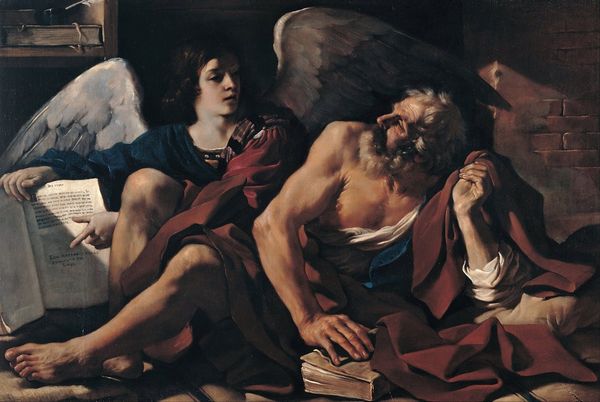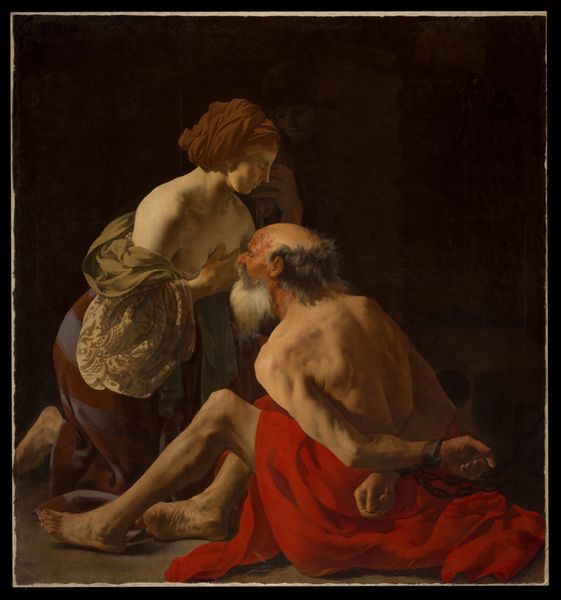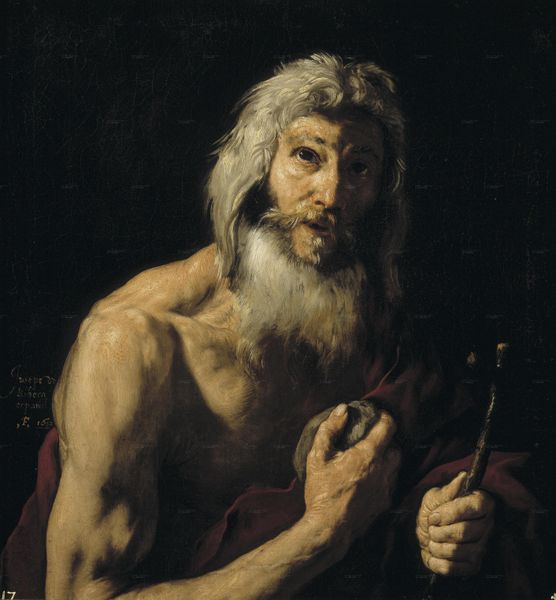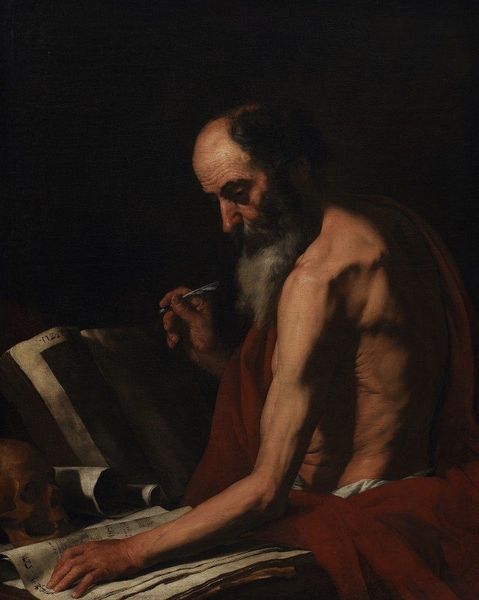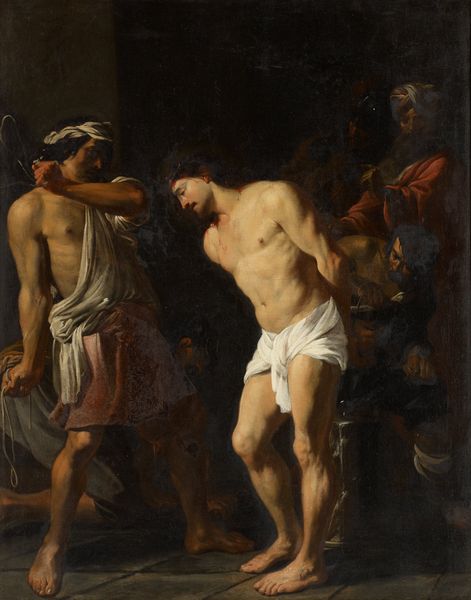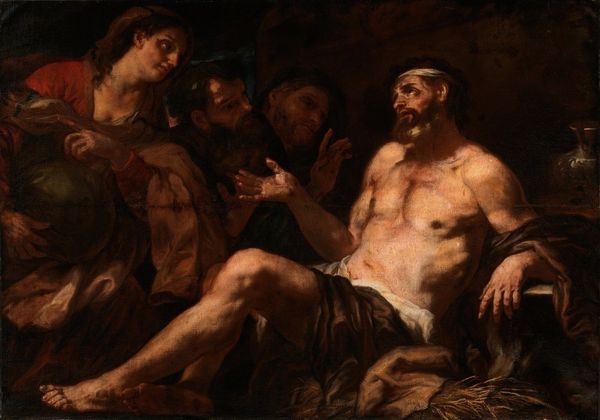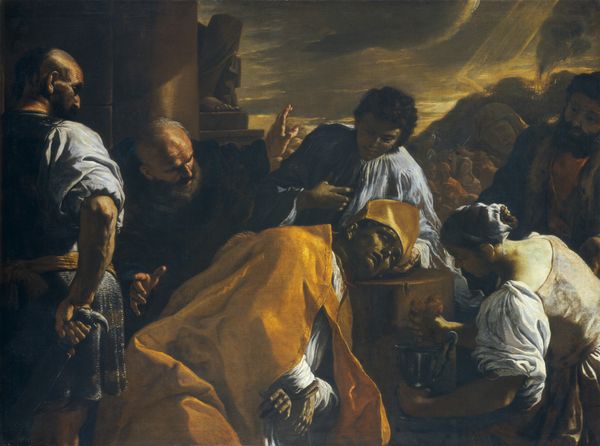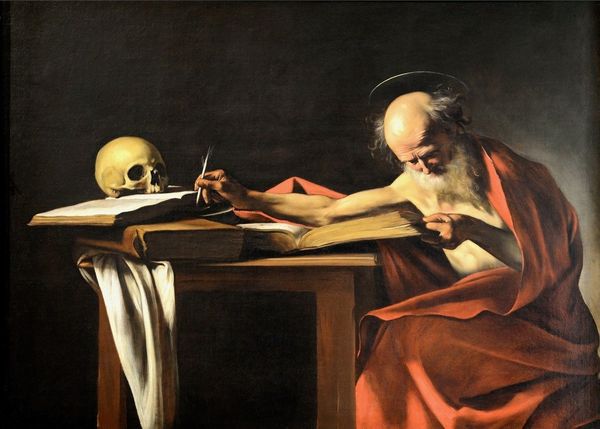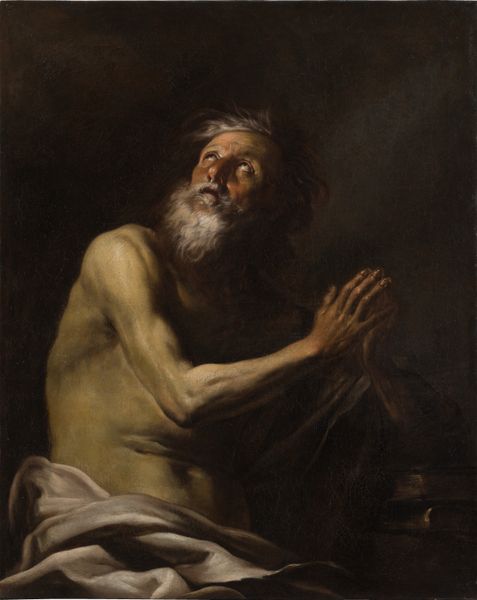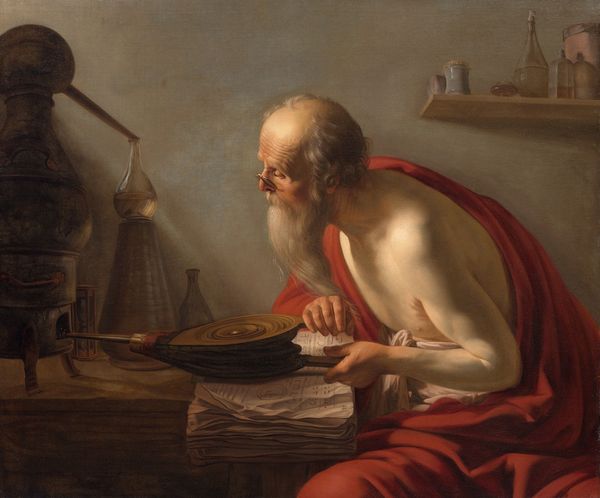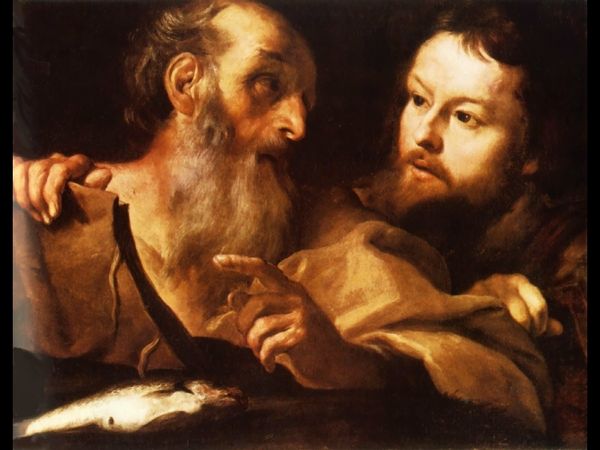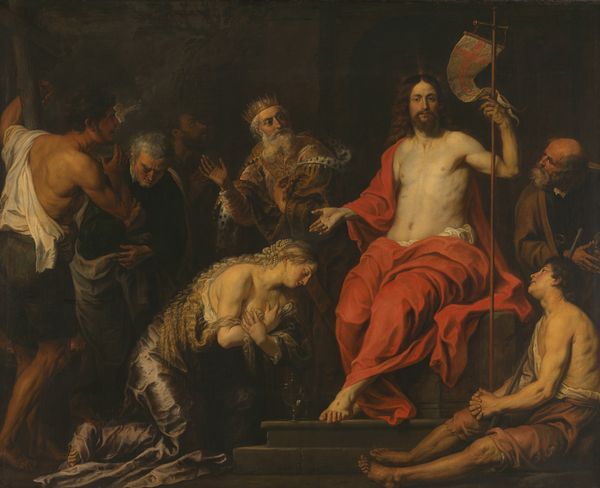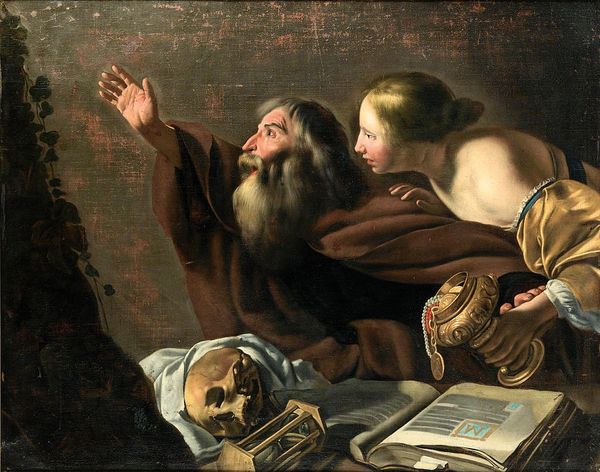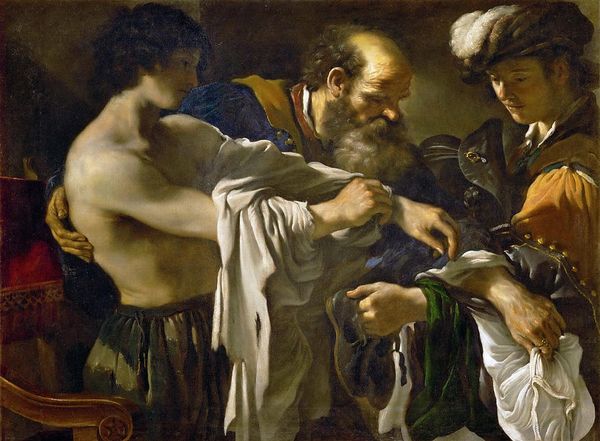
oil-paint
#
portrait
#
allegory
#
baroque
#
oil-paint
#
oil painting
#
neo expressionist
#
history-painting
Dimensions: overall: 144.8 × 179.8 cm (57 × 70 13/16 in.) framed: 165.1 × 204.47 × 9.53 cm (65 × 80 1/2 × 3 3/4 in.)
Copyright: National Gallery of Art: CC0 1.0
What techniques do you find most striking in this work? Created between 1622 and 1625, ‘Saint Jerome and the Angel’ is a dramatic oil painting by the French artist Simon Vouet (1590-1649). Its theatrical composition and bold lighting exemplify the Baroque style. Baroque is a style of art which gained vast popularity in 17th-century Europe. Baroque paintings can be recognised by their emotion and level of decoration. The Italian painter Caravaggio (1571-1610) is the best-known artist of the Baroque era – in fact, the style is often called ‘Caravaggism’! This painting depicts an elderly, bearded man seated at a table. In one hand he holds a quill, while his other hand is raised in a dramatic gesture. This is Saint Jerome, an early Christian priest who translated the Bible into Latin. At Jerome’s shoulder stands an angel, dressed in a white robe. The pale colours and white wings of the angel symbolise purity and heavenly innocence. Here, Vouet has created a symbolic contrast between age and youth. Vouet has also included several attributes associated with the figure of Saint Jerome. These small symbols would allow the saint to be identified by the painting’s viewers. The quills, ink pot, scroll, and hour glass all symbolise Jerome’s intelligence and wisdom. The trumpet held by the angel symbolises the Last Judgement, suggesting Jerome’s righteousness and divine status. This painting makes use of the dramatic lighting popularised by Caravaggio. Vouet has used ‘chiaroscuro’, a bold contrast between light and shadow, to create a dramatic atmosphere. How does it make you feel?
Comments
No comments
Be the first to comment and join the conversation on the ultimate creative platform.
